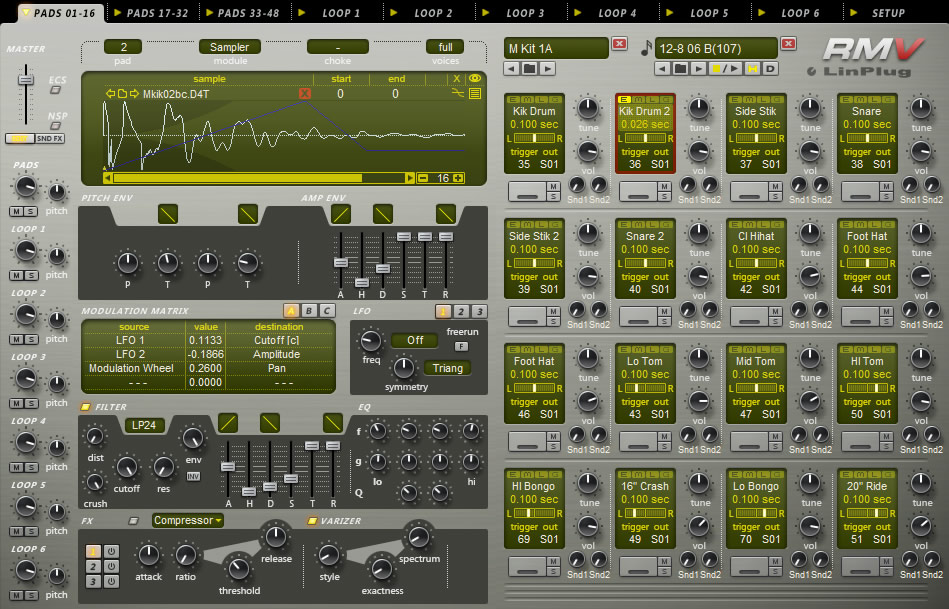Linplug Intros Relectro For Mac
CheckUp is a new way to monitor the activity of your computer. It’s like the dashboard of your car. CheckUp allows you to understand the behavior of your computer in real time. It also allows you to manage alerts to prevent problems in the future.
On December 10 th 2007, app4mac will release the first beta version of this new application designed for Mac OS X. The download link will be send per email with a special introductory price. During the beta period (until the end of January 2008), all features of the product will be FREE! CheckUp is optimized for Mac OS X 10.4 Tiger and Mac OS X 10.5 Leopard. CheckUp requires a computer with a PowerPC G4, G5 processor or an Intel processor (Universal Binary).
An option – which requires an internet connection – allows you to monitor your computer from a remote computer. More info and screenshots. That has to be the biggest, ugliest, application of this type I have ever seen. These kind of apps are a dime a dozen there are so many of them and most perform the same functions in a very acceptable fashion.
Windows For Mac
You only have to check out the main page (linked above) and look at the prominent screen shots to see that this thing takes up between three and.thirty. (!) times as much screen real estate as it’s direct competitors. It’s also butt ugly. What most people want in an application like this (and this has been.firmly. established over the last 20 years of such apps being made on Windows and on Mac), is a small utility that they can glance at once in a while for the data. This thing takes up the entire screen! How often do you want to open an app like this and sit and stare at your computers performance?
And you'll find out why being a part of the open source community means so much more than just saving money. Locate and engage with software and project hosting communities, to connect with other creators. Share your creative works with the world using Drupal Web 2.0 technology and Icecast media streaming. Abiword, audacity, gimp 2.4, kompozer, scribus, inkscape, and. Who this book is for This is a book for anyone using Linux who wants to be creative employing the tools Linux has to offer them.

Why is this a story on MacDailyNews? Is someone at this site related to the developer?
Virtual saxophone The SaxLab is a flexible and easy-to-use saxophone synthesizer that combines samples and synthesizing techniques to an instrument full of expression capabilities. SaxLabs key features include an easy-to-use interface, a wide range of high-quality preset waveforms, an effects section that includes chorus and reverb, as well as extensive real-time modulation options. Special attention has been paid to making the performance controls as rich and responsive as possible, so that the instrument can be realistically played. The sample library has been re-recorded with a world class saxophone player and by using some of the finest recording gear available. Careful post-processing of the samples means that SaxLab produces simply the best sax sound that a virtual instrument can produce. The 'Velocity to Envelope' control present in the first version of SaxLab has been replaced with a new control for enhancing the attack transients of notes. The 'Velocity to Envelope' function is still present however it is no longer adjustable by the user.
Linplug Intros Relectro For Mac Os
The new control can be used to improve the sound of attack transients and increases realism in the case of staccato or funky sax playing. A fine control named Crossfade Time has been added to SaxLab's Mode section for automatic articulation depending on the tempos at which notes are played. It controls the time that a note's pitch takes to reach the target note when the instrument is in Legato mode. The Performance section has been completely reworked and now contains many more control sources and destinations for real-time control and expression. The Performance section features a new MIDI Exp subsection which is a small modulation matrix customised for sax playing.

A new effect has been added to reproduce the 'growl' sound which is a typical component of the sound of a saxophone. The LFO has been improved and now uses a new waveshape. It also has a better 'attack' characteristic so as to create a more natural sound. The Air parameter now has a dedicated control in the Deviation section. This means that each note's 'Air' component can be randomised, creating more timbral variation from note to note. The reverb algorithm has been improved so that it sounds more natural. In addition to this, the Reverb Mix parameter is available as a modulation destination in the MIDI Exp section.
The microtuning system used in previous version of SaxLab system has been updated so that the instrument now uses standard TUN files. This means that the number of microtuning systems available for use is vastly increased.
Instrument Presets are now managed using the standard LinPlug system which is found on all other LinPlug instruments.
Blog
- ✔ Business Cards Maker Software Download For Mac
- ✔ F5521gw Mobile Broadband Driver For Mac
- ✔ Real Player 10 For Mac
- ✔ Conroe Presler Fsb1066 Dual Core Cpu Drivers For Mac
- ✔ Free Success Story-papers 3 For Mac
- ✔ Komik Indonesia Word Mojo Gold Online For Mac
- ✔ Gratis Tekstbehandling For Mac
- ✔ Supercross O Filme Download Rmvb For Mac
- ✔ Speedstream Ss1021 Drivers For Mac
- ✔ Wacom Et0405u Driver For Mac